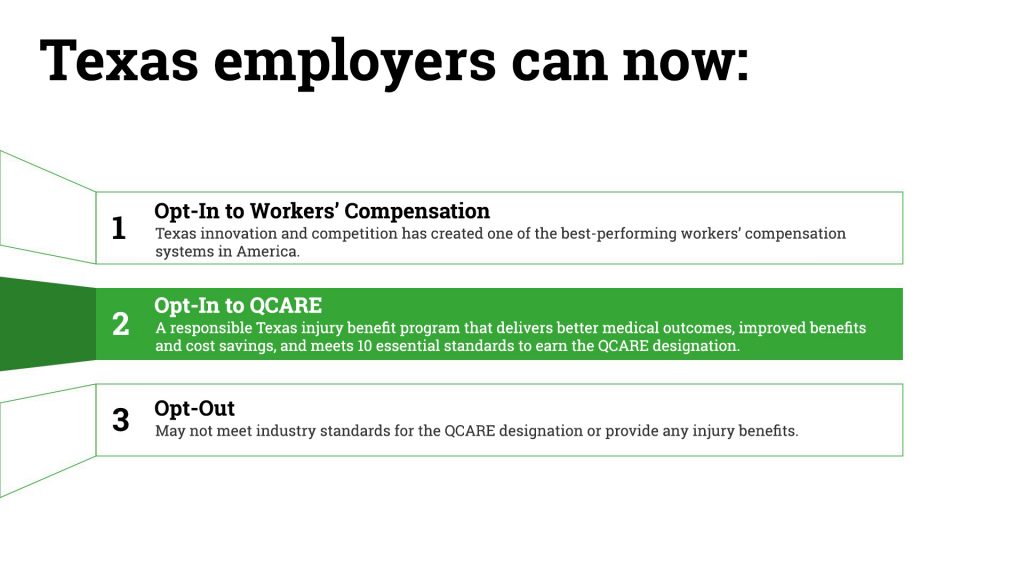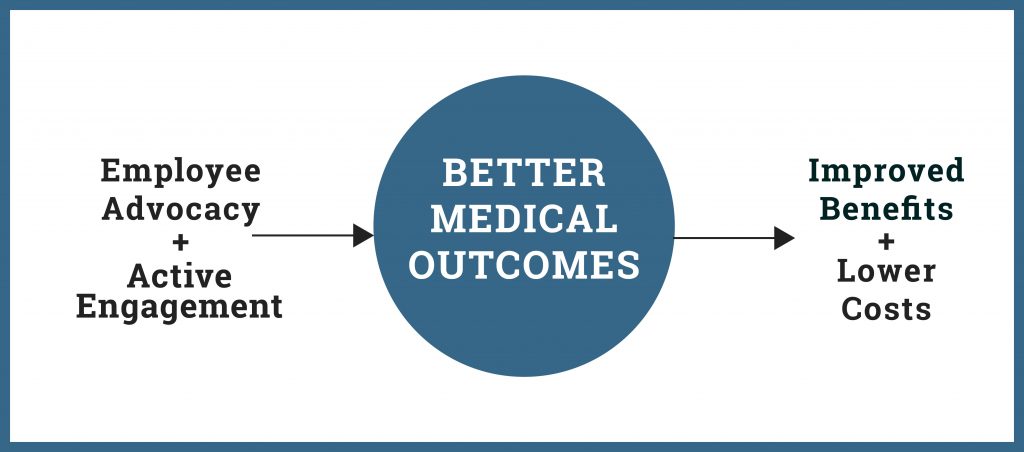One of the best displays of Texas’ innovative spirit came in 1989 when the government-run system for injured workers was in complete meltdown. Insurance companies had had enough! They were exiting the Texas workers’ compensation market (“opting out”) in droves because of uncontrolled medical and legal payments. Tens of thousands of Texas employers were forced to drop their workers’ compensation insurance in order to stay in business.
Suddenly, hundreds of thousands of Texas workers had no workers’ compensation insurance coverage to protect them if injured on the job. Mass confusion gripped injured workers unable to pay their medical bills or care for their families. Their only remedy would be to bring a lawsuit for any negligence against an employer who caused the injury. And employers weren’t sure what they could and should do to care for employees as their most important asset. Not a good place to be for injured workers OR employers.
So, in 1989, the Texas Legislature completely re-wrote the Texas Workers’ Compensation Act. And that same year, Texas employers developed the first occupational injury benefit programs. Almost overnight, Texas employers had three options:

- Opt-in to Workers’ Compensation – Texas innovation and competition has created one of the best-performing workers’ compensation systems in America.
- Opt-in to QCARE – A responsible Texas injury benefit program that delivers better medical outcomes, improved benefits and cost savings, and meets 10 essential standards to earn the QCARE designation.
- Opt-Out – May not meet industry standards for the QCARE designation or provide any injury benefits.
Thirty years later, the Texas workers’ compensation system is one of the most respected, high-performing programs in America. Seventy-two percent of Texas employers have workers’ compensation coverage and 28% of Texas employers do not. But a very high percentage (94%) of all Texas workers are covered by either workers’ comp or an injury benefit program. To date, Texas injury benefit programs have:
- Provided simple injury benefit protection to more than one million workers every day,
- Successfully resolved more than one million injury claims by paying billions of dollars in benefits and negligence liability settlements and judgments to injured workers and their families,
- Generated billions of dollars in cost savings and economic development for Texas, and
- Helped make Texas the best place to do business and raise a family.
A near-complete government system meltdown 30 years ago led to workers’ compensation and Texas injury benefit programs pursuing these same five goals:

- Employee Advocacy. We advocate for injured workers as a company’s most important asset. They want simplicity, customer service and great medical outcomes when injury occurs.
- Active Engagement. We want good communication that leads to injured workers receiving medical care fast, and following the direction of well-informed, accountable medical providers. We also want employers to be motivated and held accountable to provide safe workplaces.
- Better Medical Outcomes. We know employee advocacy and active engagement lead to better medical outcomes for injured workers, including fewer disabilities and shorter periods of disability when serious injury happens.
- Improved Benefits. Better medical outcomes help fund improved benefits, so injured workers and their families are less likely to face unexpected personal budget shortfalls when injured at work.
- Lower Costs. Better medical outcomes also result in cost savings that support an employer’s bottom line and create new jobs.
Check out Part 2 in this six-part series (“Employee Advocacy”), as we hear more of the stories behind how innovative Texas injury benefit programs advance the same goals as workers’ compensation programs.
